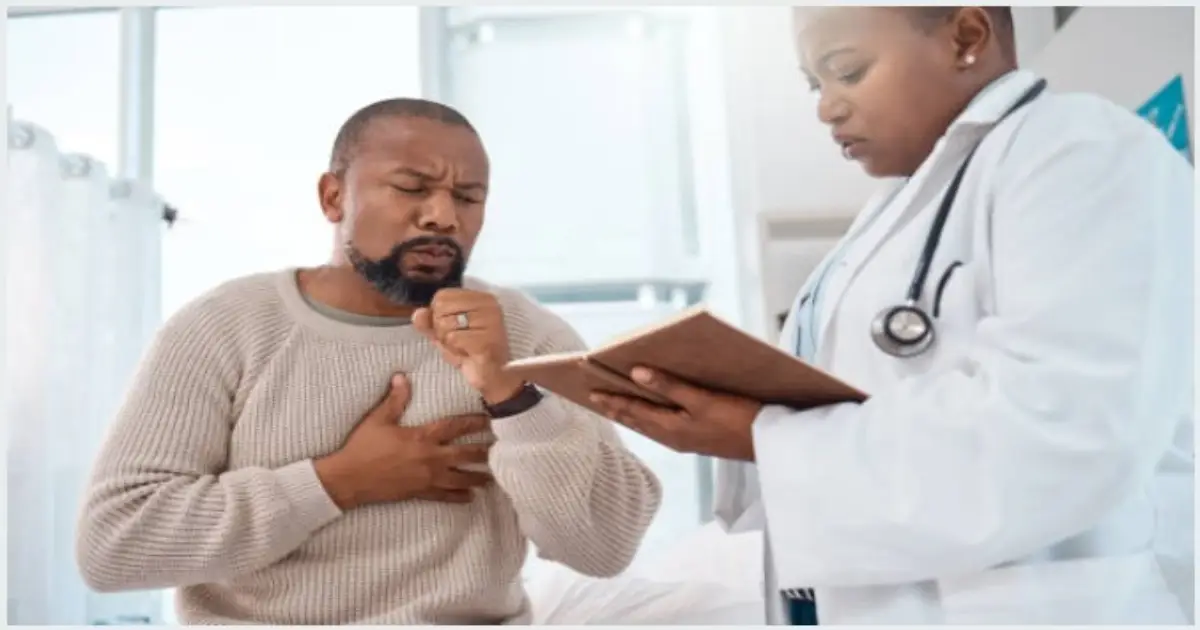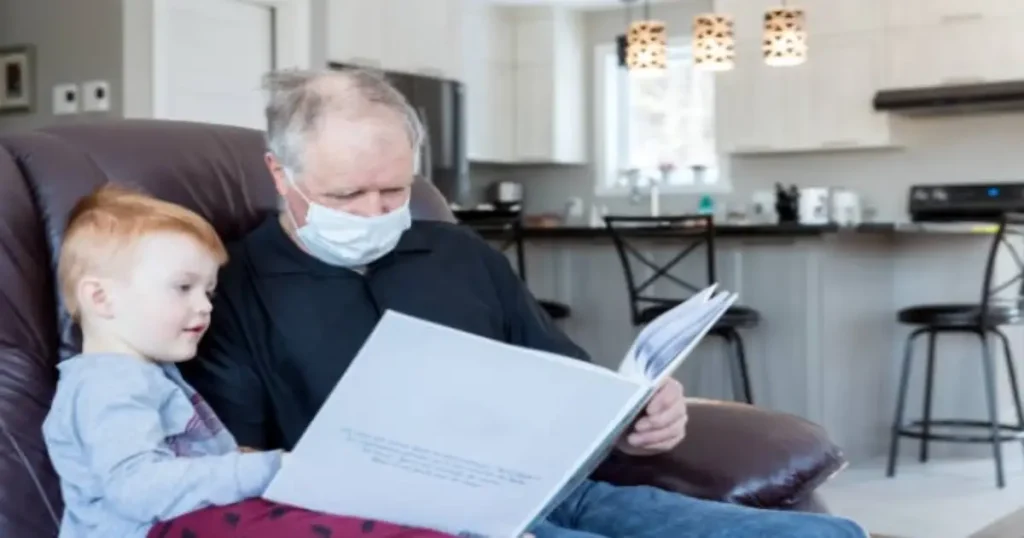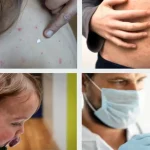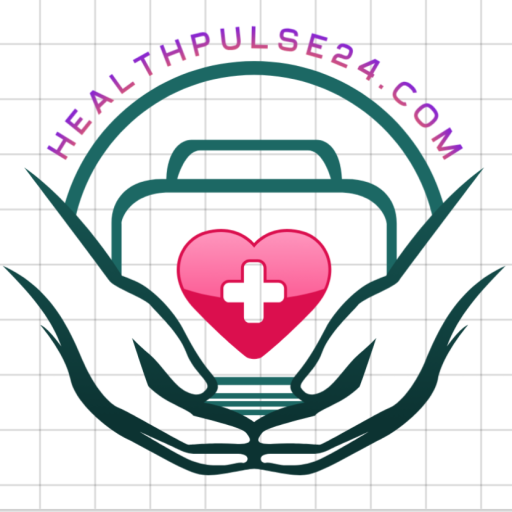Pneumonia is a serious infection that inflames the air sacs in one or both lungs. It can affect individuals of all ages and can range from mild to life-threatening. Understanding the symptoms of pneumonia is crucial for early detection and timely treatment. In this detailed guide, we’ll explore the symptoms, types, causes, diagnosis, treatment options, and prevention strategies related to pneumonia. We’ll also include comparison tables and answer frequently asked questions to help you better understand this condition.
What is Pneumonia?
Pneumonia is an infection that causes inflammation in the alveoli (air sacs) in the lungs. These sacs may fill with fluid or pus, leading to symptoms such as coughing, fever, chills, and difficulty breathing. Pneumonia can be caused by bacteria, viruses, fungi, or chemical irritants.
Overview of Pneumonia
- Definition: Lung infection causing inflammation in alveoli (air sacs).
- Causes: Caused by bacteria, viruses, fungi, or aspiration.
- Symptoms: Cough, fever, shortness of breath, chest pain, fatigue.
- Risk Groups: Infants, elderly, and those with weakened immune systems.
- Diagnosis: Physical exam, chest X-ray, blood tests.
- Treatment: Antibiotics for bacterial, antivirals for viral infections.
How the Lungs Function Normally
- Air Pathway: Air enters through nose/mouth → trachea → bronchi → bronchioles.
- Gas Exchange: Oxygen enters blood, carbon dioxide is expelled in alveoli.
- Protection: Mucus and cilia trap and expel foreign particles.
- Oxygen Delivery: Oxygen binds to hemoglobin in red blood cells for body use.
What Happens in Pneumonia?
- Infection: Pathogens invade the alveoli, causing inflammation.
- Fluid Build-up: Alveoli fill with fluid or pus, impairing gas exchange.
- Immune Response: White blood cells fight infection, causing swelling.
- Symptoms: Cough, chest pain, difficulty breathing, fever.
- Severity: Can range from mild to life-threatening.
Common Symptoms of Pneumonia

- Persistent Cough – Often producing phlegm or mucus.
- Fever – Generally high and may be accompanied by chills.
- Shortness of Breath – Especially during physical activity or at rest in severe cases.
- Chest Pain – Sharp or stabbing pain that worsens with deep breaths or coughing.
- Fatigue – Extreme tiredness or lack of energy.
- Sweating and Shaking Chills
- Confusion – Especially in older adults.
- Lower Body Temperature – In some adults over 65 and people with weak immune systems.
- Nausea, Vomiting, or Diarrhea – More common in children.
- Bluish Lips or Fingernails – Indicates a lack of oxygen in the blood.
Types of Pneumonia
- Community-Acquired Pneumonia (CAP)
- Hospital-Acquired Pneumonia (HAP)
- Ventilator-Associated Pneumonia (VAP)
- Aspiration Pneumonia
Comparison Table – Types of Pneumonia
| Type | Source of Infection | Common Pathogens | Risk Group |
|---|---|---|---|
| Community-Acquired | Outside healthcare | Streptococcus pneumoniae | General population |
| Hospital-Acquired | During hospital stay | MRSA, Pseudomonas aeruginosa | Hospitalized patients |
| Ventilator-Associated | Using mechanical ventilator | Gram-negative bacteria | ICU patients |
| Aspiration Pneumonia | Inhaling food/liquid | Anaerobic bacteria | Elderly, stroke patients |
Causes of Pneumonia
- Bacteria – Streptococcus pneumoniae, Hemophilus influenzae.
- Viruses – Influenza, RSV, SARS-CoV-2.
- Fungi – Histoplasmosis, Coccidioidomycosis.
Risk Factors for Pneumonia
- Age (infants, elderly)
- Chronic diseases (COPD, asthma)
- Weakened immune systems
- Smoking
- Hospitalization
Diagnosis of Pneumonia
- Physical Exam – Listening to the lungs with a stethoscope.
- Chest X-Ray – Detects location and extent of infection.
- Blood Tests – To check for infection and identify the organism.
- Sputum Test – Analyzes mucus to identify the cause.
- Pulse Oximetry – Measures oxygen levels in blood.
- CT Scan or Pleural Fluid Culture – In complex cases.
Self-Monitoring for Symptoms
- Track Symptoms: Monitor cough, mucus color, and breathing difficulty.
- Fever: Track temperature for changes.
- Breathing: Note any increase in shortness of breath or fatigue.
- Chest Pain: Record intensity of pain or tightness.
- Log Symptoms: Keep a record for doctor’s evaluation.
Early Signs vs. Severe Symptoms
- Early Signs: Mild cough, low-grade fever, fatigue, slight shortness of breath.
- Severe Symptoms: High fever, difficulty breathing, confusion, chest pain.
- Emergency Signs: Bluish lips, rapid breathing, persistent fever.
- Progression: Severe symptoms indicate worsening infection.
Differences in Adults vs. Children
- Adults: Cough, fever, chest pain, and fatigue are common symptoms.
- Children: Rapid breathing, wheezing, irritability, and trouble feeding.
- Infants: Nasal flaring, grunting, increased breathing rate.
- Complications: Children may experience dehydration due to difficulty feeding.
Differences in Elderly Populations
- Symptoms: Confusion, fatigue, lower fever rather than high fever.
- Vulnerabilities: Weakened immune systems and existing health conditions.
- Complications: Higher risk of respiratory failure, sepsis, or death.
- Early Detection: Subtle symptoms in the elderly require prompt medical attention.
Treatment Options

- Antibiotics – For bacterial pneumonia.
- Antiviral Medications – For viral pneumonia.
- Antifungal Drugs – For fungal pneumonia.
- Over-the-Counter Medications – For fever and pain relief.
- Hospitalization – For severe cases (oxygen therapy, IV fluids).
Comparison Table – Treatment by Type of Pneumonia
| Type of Pneumonia | Primary Treatment | Hospitalization Required? |
|---|---|---|
| Bacterial | Antibiotics | Sometimes |
| Viral | Antiviral drugs | Rare, unless severe |
| Fungal | Antifungal medication | Occasionally |
| Aspiration | Antibiotics + Supportive care | Often |
Recovery Time and Follow-Up
- Mild Cases: 1-2 weeks for recovery with proper treatment.
- Severe Cases: Longer recovery, up to several weeks, especially in the hospital.
- Follow-Up Care: Check-ups to monitor lung function and prevent relapse.
- Lingering Symptoms: Fatigue, cough may last for weeks even after infection clears.
Long-Term Effects and Complications
- Fatigue: Can last for weeks or months after infection clears.
- Lung Damage: Scarring or fibrosis may impair lung function.
- Complications: Pleurisy, lung abscesses, or sepsis.
- Chronic Conditions: Exacerbation of pre-existing conditions like COPD.
Lifestyle Adjustments During Recovery
- Rest: Ample rest is essential for recovery.
- Hydration: Helps loosen mucus and supports healing.
- Diet: Nutritious food supports immune function.
- Avoid Smoking: Refrain from smoking to protect lung health.
- Gradual Activity: Gradually return to activities, under medical guidance.
Preventive Measures
- Vaccination: Pneumococcal and flu vaccines reduce pneumonia risk.
- Hygiene: Regular handwashing and avoiding sick individuals.
- Quit Smoking: Smoking cessation protects lung health.
- Healthy Lifestyle: Proper diet, exercise, and sleep strengthen the immune system.
- Chronic Disease Management: Effectively managing conditions like diabetes reduces risk.
Role of Vaccination
- Pneumococcal vaccine
- Flu vaccine
- COVID-19 vaccine
When to Seek Medical Help
- Chest pain and persistent cough
- Difficulty breathing
- High fever with chills
- Bluish lips or fingertips
- Confusion or low responsiveness
FAQs: Symptoms of Pneumonia
- Can pneumonia go away on its own?
- Mild cases might, but most require treatment.
- How fast do symptoms of pneumonia appear?
- Symptoms can develop quickly or gradually over several days.
- Is pneumonia contagious?
- Yes, especially viral and bacterial types.
- What is walking pneumonia?
- A milder form of pneumonia caused by Mycoplasma pneumoniae.
- Can pneumonia be mistaken for a cold or flu?
- Yes, due to overlapping symptoms like cough and fever.
- Do antibiotics work for all types of pneumonia?
- No, only for bacterial types.
- What are the long-term effects of pneumonia?
- Possible lung damage, especially in severe cases.
- Are children more vulnerable to pneumonia?
- Yes, especially those under 5 years.
- Can you get pneumonia after the flu?
- Yes, secondary bacterial pneumonia is common post-flu.
- How can you tell if pneumonia is getting worse?
- Increasing shortness of breath, high fever, and confusion.
Recognizing the symptoms of pneumonia early can be life-saving, particularly in vulnerable populations like children, the elderly, and those with compromised immune systems. With proper diagnosis, treatment, and prevention strategies, pneumonia can be effectively managed. Stay informed, stay healthy, and consult a healthcare professional if symptoms arise.
Myths and Facts about Pneumonia
- Myth: Pneumonia is caused only by cold weather.
- Fact: It’s caused by bacteria, viruses, or fungi, not weather.
- Myth: Only older adults get pneumonia.
- Fact: Anyone, even healthy individuals, can get pneumonia.
- Myth: Antibiotics treat all types of pneumonia.
- Fact: Antibiotics work only for bacterial pneumonia.
- Myth: Pneumonia cannot be prevented.
- Fact: Vaccines, hygiene, and smoking cessation reduce risk.
Pneumonia in the Time of COVID-19

- COVID-19 & Pneumonia: COVID-19 can cause viral pneumonia.
- Symptoms: Similar to other pneumonia but often with a dry cough and fatigue.
- Rapid Progression: Can lead to severe respiratory distress, requiring hospitalization.
- Long COVID: Pneumonia from COVID-19 may lead to prolonged symptoms like fatigue.
- Prevention: Vaccination, early detection, and isolation are key.
Global Burden and Statistics
- Global Impact: Pneumonia is a leading cause of death worldwide, particularly in children and elderly.
- Developing Countries: Higher mortality due to limited access to healthcare.
- Prevalence in U.S.: One of the top 10 leading causes of death.
- Vaccine Access: Increased vaccination rates could reduce global pneumonia burden.
- Public Health: Education and better healthcare access can reduce mortality.
Summary and Final Thoughts
Early Detection: Recognizing symptoms early is crucial for preventing serious outcomes.
Key Points: Pneumonia is a serious lung infection requiring timely diagnosis and treatment.
Prevention: Vaccines, hygiene, and lifestyle choices can significantly reduce risk.
Treatment: Bacterial, viral, and fungal pneumonia require different treatments.
Complications: Pneumonia can lead to severe health issues like lung damage or sepsis.










1 thought on “Symptoms of Pneumonia: Causes, Diagnosis, Treatment, and Prevention”